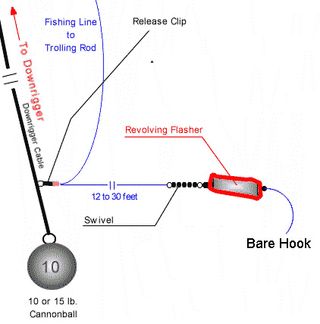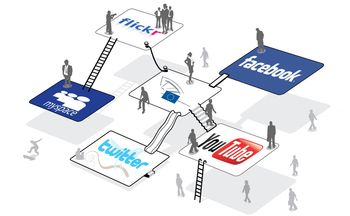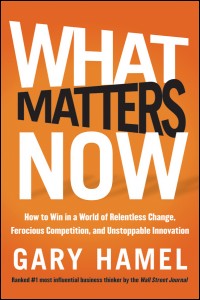Here’s a crazy confession. In 1999, I started a social media company.
I’m not kidding.
I was working for a high-tech
company in Oregon at the time, and I developed a relationship with a brilliant
software developer in Vancouver, BC. Ten
years earlier, this developer successfully launched a payroll software company
and had some extra time to dedicate toward side projects. One of those projects was called “Community
Circles.”

Community Circles was the software
backbone for a new online social network, but it needed to be applied to a compelling problem. At
the time, that problem was employee retention at large companies.
As you may remember, this was the
height of the “dot-com” bubble.
Traditional companies were having a very difficult time retaining their
best employees. Many were running off
to new, exciting startups that were offering lucrative stock options and crazy
benefits.
How could a boring old traditional
company compete with such enticing options? Part of the answer to this problem
(in our opinion) was….close personal relationships inside the company. The rationale was that if an employee had
close relationships within their existing company, it would be painful for them to
leave.
What better way to foster these
relationships than a private online social network? Since social networks were not available
outside the company (ex. Facebook), an employee would be cut off from the social
network if they left the company.
By the time we launched pilot
programs the next year, we were marketing the social networks as
“PlateSpinner.” The focus was on Gen X
employees who were having a difficult time balancing their work and personal
lives.
Long story short—not long after we
got up and running with our pilots, the "dot-com crash"
occurred. We quickly saw our
“compelling problem” evaporate because unemployment was rising and those
traditional companies were now having no problem with retention. Not long after the employment tide changed,
PlateSpinner died.
This is a classic entrepreneurial
story of having a great idea…at the wrong time.
In hindsight, the technology was not yet available to support the concept
of an online social network. The main
problem was that high-speed internet connections were not common enough yet,
and much of what makes a social network interesting requires larger bandwidths.
By now, you might be wondering why
I’m telling you this story. The purpose
is to provide you some background information, leading up to an important interaction
that occurred while we were introducing large companies to the Platespinner
social network back in the spring of 2000…
The interaction happened in a
meeting with one of the executives at Costco.
As you may know, Costco is headquartered in Seattle and was trying, at
the time, to keep talented employees from joining crazy little retailing
startups, like Amazon.com and HomeGrocer.com.
Costco had the need for a product like Platespinner.
As we explained the concept of an
online social network to this executive (he was in his mid-sixties), he stopped
the presentation about halfway through and asked this question:
“Would using this product require that employees have access to a computer and the internet?”
“Yes, it does,” I answered.
“If that’s the case,” he
responded, “I don’t think we would be interested in giving our employees access
to such a technology. A couple of years
ago, we gave them access to email, and it has been nearly impossible to
control. All they do is talk to each
other now—no one seems to do any work!”
At that point in time, what
emotion was that executive experiencing?
Fear.
He was fearful of unleashing a
technology in his company that would spiral out of control and cause his
employees to lose focus and waste time.
Looking back, I’m surprised at his
insight. Back in the year 2000, this
executive was able to quickly get his arms around a new technology that would
not become mainstream in the business world for another decade. And, as he thought through the implications
of such an innovation, he understood the apprehension that he and other
business leaders would experience if online social networking was made
available to employees.
Now…fast forward to 2012. While online social networks are now near
ubiquitous in society and very common in businesses, the number one emotion
that business leaders experience when talking about social networks is still
fear.
Over the next couple of
discussions, we’ll delve into some research that Harvard Business Review has
published on this topic and learn how progressive organizations are overcoming
the fear of embracing social networking technologies. The promised benefits of the social
networking revolution are on the other side of this chasm.
 Editor's Note: This article was written by Ben Hess. Ben is the Founding Partner and Managing Director of Tidemark, Inc. and a regular contributor to WorkPuzzle. Comments or questions are welcome. If you're an email subscriber, reply to this WorkPuzzle email. If you read the blog directly from the web, you can click the "comments" link below.
Editor's Note: This article was written by Ben Hess. Ben is the Founding Partner and Managing Director of Tidemark, Inc. and a regular contributor to WorkPuzzle. Comments or questions are welcome. If you're an email subscriber, reply to this WorkPuzzle email. If you read the blog directly from the web, you can click the "comments" link below.















